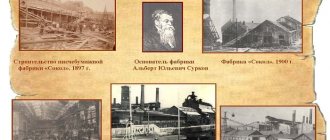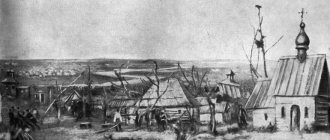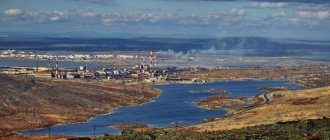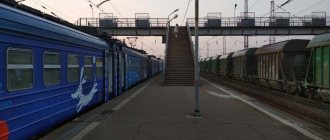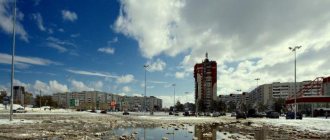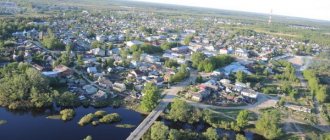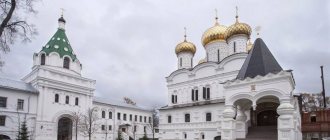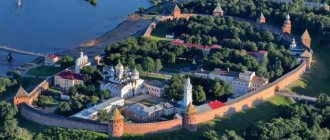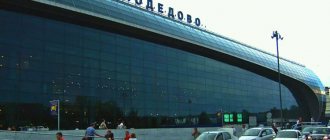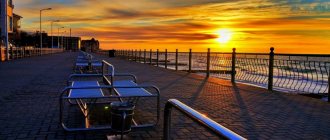Nikolsk
, a city in Russia, the administrative center of the Nikolsky district of the Vologda region, within the Veliky Ustyug diocese. Located on the slopes of Northern Uvaly, the pier is on the right bank of the Yug River (a tributary of the Sukhona), 160 km south of the Veliky Ustyug railway station, 442 km east of Vologda. Population - 8.4 thousand (2012).
- On the map: Yandex.Map, Google map
Nikolsky Pogost
(
Nikolskaya Sloboda
) was founded in the century by immigrants from the central regions of Russia as a pier on the Yug River. It owes its name to the Church of St. Nicholas the Wonderworker, which, according to legend, replaced the chapel built on the site of the discovery of the icon of St. Nicholas the Wonderworker.
At the end of the 16th century, with the beginning of foreign trade through the Arkhangelsk port, from 35 to 50 barges were built here annually, the material for which was delivered from the surrounding pine forests.
After the census of 1623-1626, the name of the settlement was reflected in the name of the volost.
In 1780, by decree of Empress Catherine II, Nikolskaya Sloboda received the status of a district town of Nikolsk
Vologda governorship. The quarterly development of the city was first provided for by the general plan of January 16, 1784, with the streets converging on the central square near the church. Since 1796 it has been a district town in the Vologda province. In the 1820s, the authorities decided to evict the neighboring villages of Borisovo, Melentyevo and Vakhromeevo to the city, and declare their lands as city property. However, the transformation did not turn villagers into townspeople - local residents retained their customs, which differed significantly from the bourgeois culture.
In the 19th and early centuries, Nikolsk and its district were a place of political exile.
By 1894, one distillery and two brick factories were operating in the city; religious school, women's gymnasium, city and parochial schools; almshouse, hospital. The main occupations of the residents were flax growing, hunting and building river boats. Nikolsk was still famous for its trade: grain, grain, timber, flax, resin, tar, and some other peasant goods were exported in significant quantities. By the 1910s, the development of the historical part of the city acquired the appearance that was generally preserved at the beginning of the 21st century.
In 1918-1929, Nikolsky Uyezd was part of the Northern Dvina Governorate, then - part of the Northern Territory and Northern Region. Since 1937, the city has been the regional center of the Vologda region. By the end of the Soviet period, a butter factory and a flax mill operated in the city [1].
Statistics
- 1623 – 83 peasant households, 47 ladles’ households [2]
- 1856 - 1.2 thousand. people, 2 churches, 145 houses, 18 shops [3]
- 1894 - 3 stone churches, 375 houses (of which 4 were stone) [2]
- January 1, 1896 - 2061 people [2]
- 1913 - 3 thousand people [3]
- 1931 - 3.2 thousand people [3]
- 1959 - 5.6 thousand people [3]
- 1970 - 6.5 thousand people [3]
- 1989 - 8.6 thousand people [3]
- 2001 - 9.2 thousand people [3]
Nikolsk
(Vologda Region)
OKATO code:
19234501
Founded:
15th century.
City since:
1780 City of district subordination (Nikolsky district, Vologda region)
Center:
Nikolsky district
Telephone code (reference phone)
| 81754***** | 22-2-22 |
Deviation from Moscow time, hours:
0
Geographic latitude:
59°32′
Geographic longitude:
45°27′
Altitude above sea level, meters:
140 Sunrise and sunset times of the Sun and Moon in the city of Nikolsk
Attractions
The city is picturesquely located in a steep bend of the Yug River. The main attractions include: Sretensky Cathedral of 1790-1882, the current Kazan Church (late 19th century - early 20th century), buildings of the former religious school (1882) and zemstvo administration (mid-19th century). Nikolsky Historical and Memorial Museum of the poet A. Ya. Yashin.
Of particular interest are the wooden buildings that determine the appearance of the settlement. Houses with mezzanines, balconies with carved balusters (estimated time of construction: late 19th - early 20th centuries). Private estates with spacious porches and covered courtyards located on the side of the main building.
Natural monuments in the vicinity of the city: Kudrinsky Bor 660 hectares (rare species of orchid plants); tract Yashkin bor 138 ha, bor-belomoshnik.
Map
| Nikolsk: maps |
Nikolsk: photo from space (Google Maps) Nikolsk: photo from space (Microsoft Virtual Earth)
| Nikolsk. Nearest cities. Distances in km. on the map (in brackets along roads) + direction. Using the hyperlink in the distance , you can get the route (information courtesy of the AutoTransInfo website) | |||
| 1 | Kichmengsky Town | 54 (63) | WITH |
| 2 | Pavino (Kostroma region) | 60 (116) | SE |
| 3 | Pyshchug (Kostroma region) | 73 (73) | YU |
| 4 | Georgievskoe (Kostroma region) | 92 (241) | YU |
| 5 | Vokhma (Kostroma region) | 99 (163) | SE |
| 6 | Kologriv | 100 (199) | SW |
| 7 | Bogovarovo (Kostroma region) | 108 (173) | SE |
| 8 | Nyuksenitsa | 118 (315) | NW |
| 9 | Podosinovets (Kirov region) | 122 (143) | NE |
| 10 | Vetluzhsky (Kostroma region) | 127 (142) | YU |
| 11 | Demyanovo (Kirov region) | 128 (158) | NE |
| 12 | Sharya | 129 (140) | YU |
| 13 | them. Babushkina | 132 (179) | Z |
| 14 | Manturovo | 139 (181) | YU |
| 15 | Ponazirevo (Kostroma region) | 139 (188) | YU |
a brief description of
Located on the slopes of Northern Uvaly, pier on the river. South (tributary of the Sukhona), 160 km from the railway. Veliky Ustyug station, 442 km east of Vologda.
In the Nikolsky district there are nature reserves: Talitsky Forest (landscape) and Gladky Bor.
Territory (sq. km): 17
Information about the city of Nikolsk on the Russian Wikipedia site
Historical sketch
According to the scribe books of 1623, at the end of the 14th - beginning of the 15th centuries. existed as a pier called Nikolsky Pogost (Nikolskaya Sloboda); name after the church. In 1623 there were 83 peasant households.
In the 18th century this is the village of Nikolskoye, which in 1780 was transformed into the district town of Nikolsk of the Vologda governorate (since 1796 - Vologda province).
The main occupations of residents in the 19th - early 20th centuries. - flax growing, hunting and construction of river barges.
In 1856, in the district town of Nikolsk, Vologda province, there were 2 churches, 145 houses, 18 shops.
In the 19th century Nikolsk is a place of political exile, among those exiled is the publicist N.V. Shelgunov (1824-91), traveler and ethnographer G.N. Potanin (1835-1920) and others.
Economy
Lespromkhoz, flax plant, food processing plant (confectionery), JSC Nikolskmoloko.
In the Nikolsky region, mainly oats, flax, potatoes, and forage grasses are grown. Dairy and meat and dairy cattle breeding. Horses and pigs are also bred.
Deposits of limestone, sand, clay, peat.
Culture, science, education
Nikolsk is the birthplace of the poet A.Ya. Yashina.
Museums, galleries, exhibition halls
Nikolsky Historical and Memorial Museum of A.Ya. Yashin 161440, Vologda region, Nikolsky district, Nikolsk, st. Bankovskaya, 14
Architecture, sights
Sretensky Cathedral (late 18th - early 19th centuries), Kazan Church (late 19th century), buildings of the former religious school (1822) and zemstvo administration (mid-19th century).
On the outskirts of the city there is a natural monument - Yashkin Bor.
| Population by year (thousands of inhabitants) | |||||||
| 1856 | 1.2 | 1989 | 8.6 | 2006 | 8.6 | 2015 | 8.0 |
| 1897 | 2.6 | 1992 | 8.9 | 2007 | 8.5 | 2016 | 8.0 |
| 1913 | 3.0 | 1996 | 9.2 | 2008 | 8.5 | 2017 | 8.0 |
| 1931 | 3.2 | 1998 | 9.2 | 2010 | 8.4 | 2018 | 8.0 |
| 1939 | 5.1 | 2000 | 9.2 | 2011 | 8.5 | 2019 | 8.0 |
| 1959 | 5.6 | 2001 | 9.2 | 2012 | 8.4 | 2020 | 7.9 |
| 1970 | 6.5 | 2003 | 8.6 | 2013 | 8.2 | 2021 | 8.0 |
| 1979 | 7.3 | 2005 | 8.6 | 2014 | 8.1 | ||
Climate
| Climate of Nikolsk | |||||||||||||
| Index | Jan | Feb | Mar | Apr | May | Jun | Jul | Aug | Sep | Oct | But I | Dec | Year |
| Average temperature, °C | 12,3 | 10,6 | 4,3 | 3,5 | 10 | 15,5 | 17,8 | 14,4 | 9 | 2,5 | 5,4 | 9,6 | 2,6 |
Excerpt characterizing Nikolsk (Vologda region)
A young man in a fox sheepskin coat stood in a submissive pose, clasping his hands together in front of his stomach and bending slightly. His emaciated, hopeless expression, disfigured by his shaved head, was downcast. At the first words of the count, he slowly raised his head and looked down at the count, as if wanting to tell him something or at least meet his gaze. But Rastopchin did not look at him. On the young man’s long thin neck, like a rope, the vein behind the ear became tense and turned blue, and suddenly his face turned red. All eyes were fixed on him. He looked at the crowd, and, as if encouraged by the expression that he read on the faces of the people, he smiled sadly and timidly and, again lowering his head, adjusted his feet on the step. “He betrayed his tsar and his fatherland, he handed himself over to Bonaparte, he alone of all Russians disgraced the name of the Russian, and Moscow is perishing from him,” said Rastopchin in an even, sharp voice; but suddenly he quickly looked down at Vereshchagin, who continued to stand in the same submissive pose. As if this look had exploded him, he, raising his hand, almost shouted, turning to the people: “Deal with him with your judgment!” I'm giving it to you! The people were silent and only pressed each other closer and closer. Holding each other, breathing in this infected stuffiness, not having the strength to move and waiting for something unknown, incomprehensible and terrible became unbearable. The people standing in the front rows, who saw and heard everything that was happening in front of them, all with fearfully wide-open eyes and open mouths, straining all their strength, held back the pressure of those behind them on their backs. - Beat him!.. Let the traitor die and not disgrace the name of the Russian! - shouted Rastopchin. - Ruby! I order! - Hearing not words, but the angry sounds of Rastopchin’s voice, the crowd groaned and moved forward, but stopped again. “Count!..” said Vereshchagin’s timid and at the same time theatrical voice amidst the momentary silence that ensued again. “Count, one god is above us...” said Vereshchagin, raising his head, and again the thick vein on his thin neck filled with blood, and the color quickly appeared and ran away from his face. He didn't finish what he wanted to say. - Chop him! I order!.. - shouted Rastopchin, suddenly turning pale just like Vereshchagin. - Sabers out! - the officer shouted to the dragoons, drawing his saber himself. Another even stronger wave swept through the people, and, reaching the front rows, this wave moved the front rows, staggering, and brought them to the very steps of the porch. A tall fellow, with a petrified expression on his face and a stopped raised hand, stood next to Vereshchagin. - Ruby! - Almost an officer whispered to the dragoons, and one of the soldiers suddenly, with his face distorted with anger, hit Vereshchagin on the head with a blunt broadsword. "A!" - Vereshchagin cried out briefly and in surprise, looking around in fear and as if not understanding why this was done to him. The same groan of surprise and horror ran through the crowd. "Oh my God!" – someone’s sad exclamation was heard. But following the exclamation of surprise that escaped Vereshchagin, he cried out pitifully in pain, and this cry destroyed him. That barrier of human feeling, stretched to the highest degree, which still held the crowd, broke through instantly. The crime had been started, it was necessary to complete it. The pitiful groan of reproach was drowned out by the menacing and angry roar of the crowd. Like the last seventh wave, breaking ships, this last unstoppable wave rose from the rear ranks, reached the front ones, knocked them down and swallowed everything. The dragoon who struck wanted to repeat his blow. Vereshchagin, with a cry of horror, shielding himself with his hands, rushed towards the people. The tall fellow he bumped into grabbed Vereshchagin’s thin neck with his hands and, with a wild cry, he and he fell under the feet of the crowd of roaring people. Some beat and tore Vereshchagin, others were tall and small. And the cries of the crushed people and those who tried to save the tall fellow only aroused the rage of the crowd. For a long time the dragoons could not free the bloodied, beaten half to death factory worker. And for a long time, despite all the feverish haste with which the crowd tried to complete the work once begun, those people who beat, strangled and tore Vereshchagin could not kill him; but the crowd pressed them from all sides, with them in the middle, like one mass, swaying from side to side and did not give them the opportunity to either finish him off or throw him. “Beat with an ax, or what?.. crushed... Traitor, sold Christ!.. alive... living... the deeds of a thief are torment. Constipation!.. Is Ali alive?” Only when the victim had stopped struggling and her screams were replaced by a uniform, drawn-out wheeze, did the crowd begin to hastily move around the lying, bloody corpse. Everyone came up, looked at what had been done, and with horror, reproach and surprise pressed back. “Oh my God, the people are like beasts, where can a living person be!” - was heard in the crowd. “And the guy is young... he must be from the merchants, then the people!.. they say, he’s not the one... how could he not be the one... Oh my God... They beat another, they say, he’s barely alive... Eh, people... Who is not afraid of sin...” they were saying now the same people, with a painfully pitiful expression, looking at the dead body with a blue face, smeared with blood and dust and with a long thin neck severed. The diligent police officer, finding it indecent the presence of a corpse in his lordship's courtyard, ordered the dragoons to drag the body out into the street. Two dragoons took hold of the mangled legs and dragged the body. A bloody, dust-smeared, dead shaved head on a long neck, tucked under, dragged along the ground. The people huddled away from the corpse.
Population
| Population | |||||
| 1856[3] | 1897[3] | 1913[3] | 1931[3] | 1939[3] | 1959[4] |
| 1200 | ↗2600 | ↗3000 | ↗3200 | ↗5100 | ↗5584 |
| 1970[5] | 1979[6] | 1989[7] | 1992[3] | 1996[3] | 1998[3] |
| ↗6451 | ↗7288 | ↗8574 | ↗8900 | ↗9200 | →9200 |
| 2000[3] | 2001[3] | 2002[8] | 2003[3] | 2005[3] | 2006[3] |
| →9200 | →9200 | ↘8649 | ↘8600 | →8600 | →8600 |
| 2007[3] | 2008[9] | 2009[10] | 2010[11] | 2011[3] | 2012[12] |
| ↘8500 | →8500 | ↘8425 | ↗8476 | ↗8500 | ↘8403 |
| 2013[13] | 2014[14] | 2015[15] | 2016[2] | ||
| ↘8223 | ↘8063 | ↘7989 | ↘7976 | ||
History[edit]
The area was originally inhabited by Finno-Ugric peoples. [ citation needed
] In the 14th and 15th centuries, during colonization, it was a disputed territory between the Grand Duchy of Moscow and the Novgorod Republic.
[ citation needed
] Novgorod controlled most of the Russian North, and in particular all areas along the Sukhona River northeast of the present Nikolsky District.
[ citation needed
] Moscow controlled Veliky Ustyug, which it inherited from the Principality of Vladimir-Suzdal, and the Yuge River was the waterway along which it went to Veliky Ustyug.
[ citation needed
] It is known that in 1425 Nikolsk and its environs paid tribute to Novgorod.
[3] At the end of the 15th century, the Grand Duchy of Moscow captured the territories of Novgorod, and Nikolsk became one of the key points on the route from Moscow to the White Sea, which until 1703 was the main route of foreign trade. in Russia. [ citation needed
] Nikolsky port, in particular, was used for the transport of goods.
[ citation needed
]
During the administrative reform carried out in 1708 by Peter the Great, the territory became part of the Arkhangelgorod Governorate. [ citation needed
] In 1780, the governorate was abolished and transformed into the Vologda viceroyalty.
[ citation needed
] At the same time, Nikolsk became a district seat and received city rights.
[3] The governorship was abolished in 1796, and Nikolsky district was transferred to the Vologda province. [ citation needed
] On July 24, 1918, the territory was transferred to the newly formed Northern Dvina province with its administrative center in Veliky Ustyug. [11] On April 18, 1924, the counties were abolished in favor of new divisions, okrugs, as a result of which the Nikolsky district was formed. [eleven]
Economics [edit]
Industry[edit]
The forestry and food industries are represented in Nikolsk, including the production of meat, milk and bread. There is also a textile production line called Linum.
Transport[edit]
The city was formerly served by Nikolsk Airport, which is currently closed.
Paved roads connect Nikolsk with Pishchug and Manturovo in the south, crossing the border with Kostroma Oblast, with Totma in the west and with Veliky Ustyug via Kichmensky Gorodok in the north. There are regular bus services along these roads as well as local bus services.
The Yug River is navigable downstream from Nikolsk; however, there is no passenger navigation.
There are no railways around Nikolsk, and the nearest railway stations with regular passenger service are Kotlas in the Arkhangelsk region and Sharya in the Kostroma region. It was planned to extend the Montskaya railway, built for timber carriers, which runs along the border of the Vologda and Kostroma regions, to Nikolsk; However, these plans were not destined to come true. [12]
Culture and recreation[edit]
Nikolskoe cabaret
In Nikolsk there are sixty objects recognized as cultural and historical heritage of local significance. [13] These are the remains of Nikolsk before 1917.
Author Alexander Yashin, associated with the "Village Prose" movement in Russian literature, was born in 1913 in what is now Nikolsky District, educated in Nikolsk and lived in the city until the mid-1930s. The only state museum in Nikolsk is the Alexander Yashin Memorial Museum. [14] The museum occupies the house that belonged to Yashin's parents, as well as Yashin's former house.
Notes
- [www.nikolskreg.ru/article/r-11.html Municipalities] on the website of the Nikolsky district administration
- ↑ 123
www.gks.ru/free_doc/doc_2016/bul_dr/mun_obr2016.rar Population of the Russian Federation by municipalities as of January 1, 2021 - ↑ 123456789101112131415
[www.MojGorod.ru/vologod_obl/nikolskv/index.html People's encyclopedia “My City”. Nikolsk (Vologda region)]. Retrieved June 28, 2014. [www.webcitation.org/6Qf8dCRvo Archived from the original on June 28, 2014]. - [demoscope.ru/weekly/ssp/rus59_reg2.php All-Union Population Census of 1959. The size of the urban population of the RSFSR, its territorial units, urban settlements and urban areas by gender] (Russian). Demoscope Weekly. Retrieved September 25, 2013. [www.webcitation.org/6GDOghWC9 Archived from the original on April 28, 2013].
- [demoscope.ru/weekly/ssp/rus70_reg2.php All-Union Population Census of 1970 The size of the urban population of the RSFSR, its territorial units, urban settlements and urban areas by gender.] (Russian). Demoscope Weekly. Retrieved September 25, 2013. [www.webcitation.org/6GDOiMstp Archived from the original on April 28, 2013].
- [demoscope.ru/weekly/ssp/rus79_reg2.php All-Union Population Census of 1979 The size of the urban population of the RSFSR, its territorial units, urban settlements and urban areas by gender.] (Russian). Demoscope Weekly. Retrieved September 25, 2013. [www.webcitation.org/6GDOjhZ5L Archived from the original on April 28, 2013].
- [demoscope.ru/weekly/ssp/rus89_reg2.php All-Union Population Census of 1989. Urban population]. [www.webcitation.org/617x0o0Pa Archived from the original on August 22, 2011].
- [www.perepis2002.ru/ct/doc/1_TOM_01_04.xls All-Russian Population Census 2002. Volume. 1, table 4. Population of Russia, federal districts, constituent entities of the Russian Federation, districts, urban settlements, rural settlements - regional centers and rural settlements with a population of 3 thousand or more]. [www.webcitation.org/65AdCU0q3 Archived from the original on February 3, 2012].
- [www.gks.ru/bgd/regl/b08_14t/IssWWW.exe/Stg/sz/05.htm Cities of the Vologda region (number of inhabitants - estimate as of January 1, 2008, thousand people)]. Retrieved June 14, 2021. [www.webcitation.org/6iGKZFCQ8 Archived from the original on June 14, 2016].
- [www.gks.ru/bgd/regl/B09_109/IssWWW.exe/Stg/d01/tabl-21-09.xls Number of permanent population of the Russian Federation by cities, urban-type settlements and districts as of January 1, 2009]. Retrieved January 2, 2014. [www.webcitation.org/6MJmu0z1u Archived from the original on January 2, 2014].
- std.gmcrosstata.ru/webapi/opendatabase?id=VPN2002_2010L All-Russian population censuses of 2002 and 2010
- [www.gks.ru/free_doc/doc_2012/bul_dr/mun_obr2012.rar Population of the Russian Federation by municipalities. Table 35. Estimated resident population as of January 1, 2012]. Retrieved May 31, 2014. [www.webcitation.org/6PyOWbdMc Archived from the original on May 31, 2014].
- [www.gks.ru/free_doc/doc_2013/bul_dr/mun_obr2013.rar Population of the Russian Federation by municipalities as of January 1, 2013. - M.: Federal State Statistics Service Rosstat, 2013. - 528 p. (Table 33. Population of urban districts, municipal districts, urban and rural settlements, urban settlements, rural settlements)]. Retrieved November 16, 2013. [www.webcitation.org/6LAdCWSxH Archived from the original on November 16, 2013].
- [www.gks.ru/free_doc/doc_2014/bul_dr/mun_obr2014.rar Table 33. Population of the Russian Federation by municipalities as of January 1, 2014]. Retrieved August 2, 2014. [www.webcitation.org/6RWqP50QK Archived from the original on August 2, 2014].
- [www.gks.ru/free_doc/doc_2015/bul_dr/mun_obr2015.rar Population of the Russian Federation by municipalities as of January 1, 2015]. Retrieved August 6, 2015. [www.webcitation.org/6aaNzOlFO Archived from the original on August 6, 2015].
